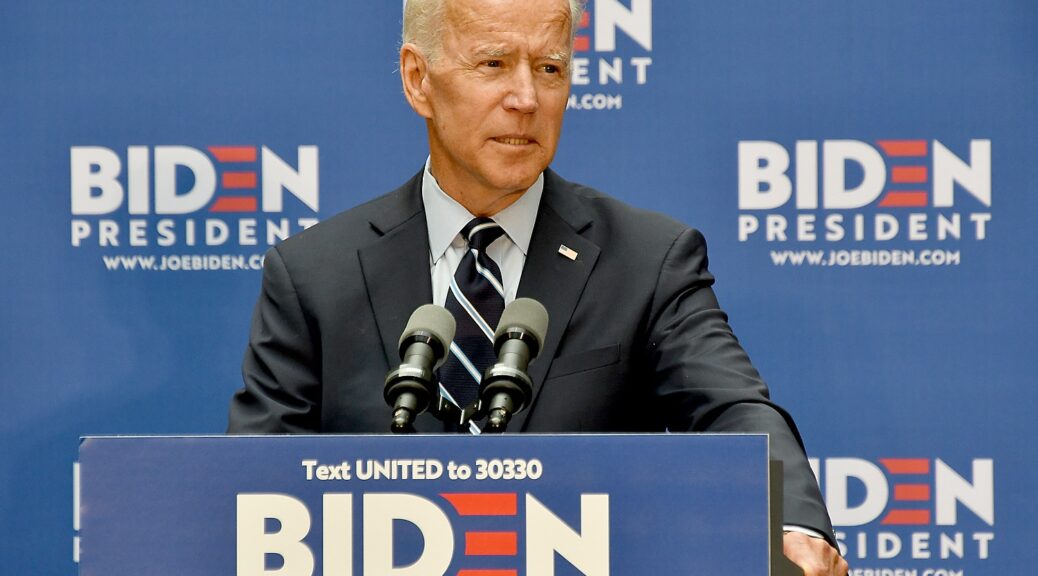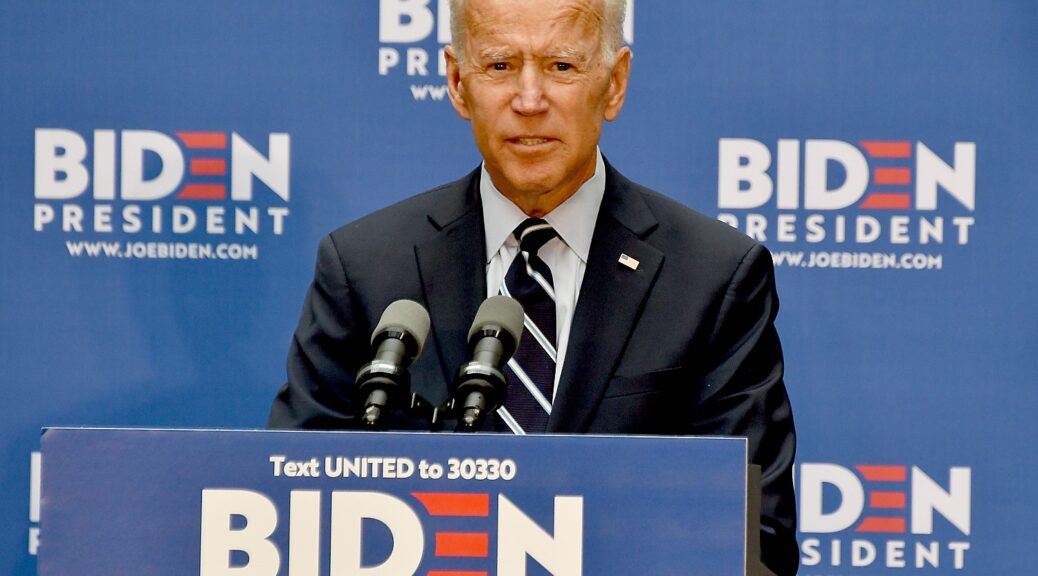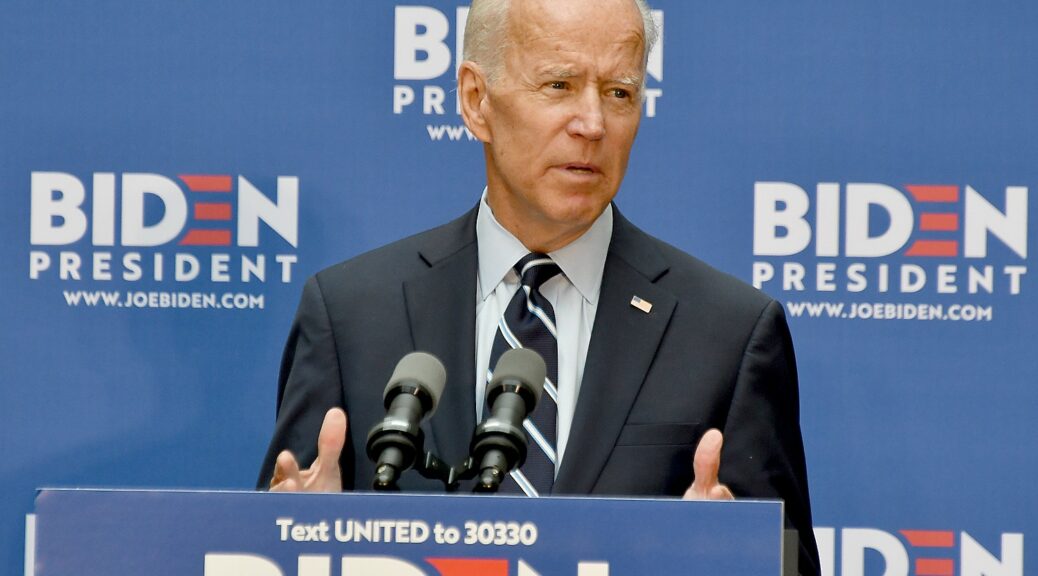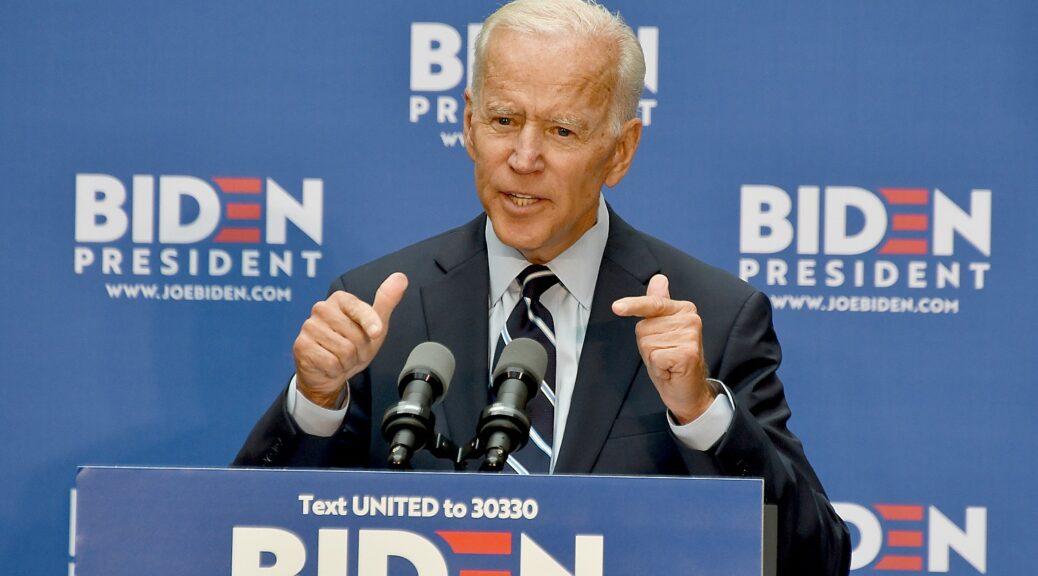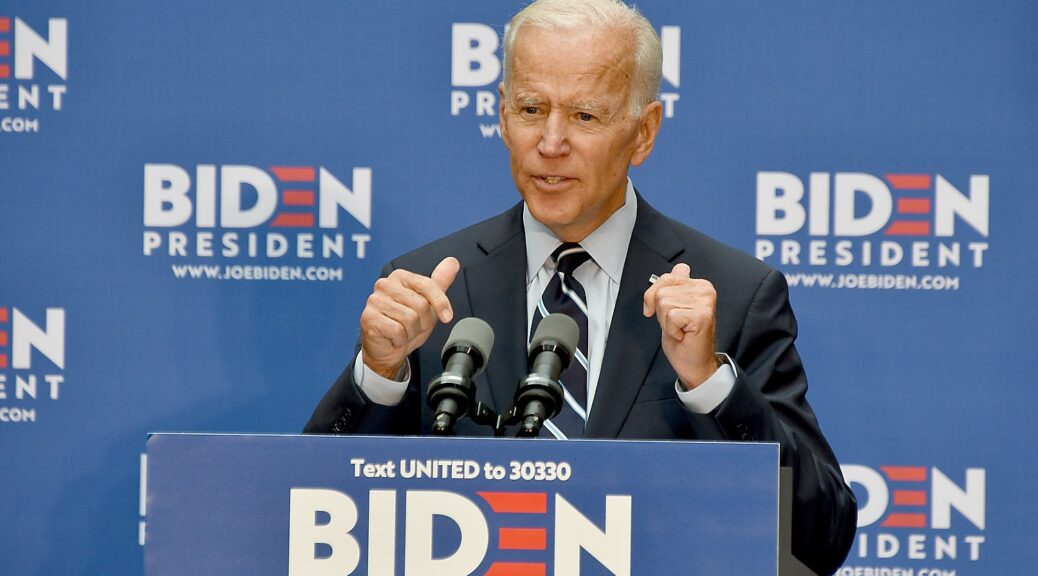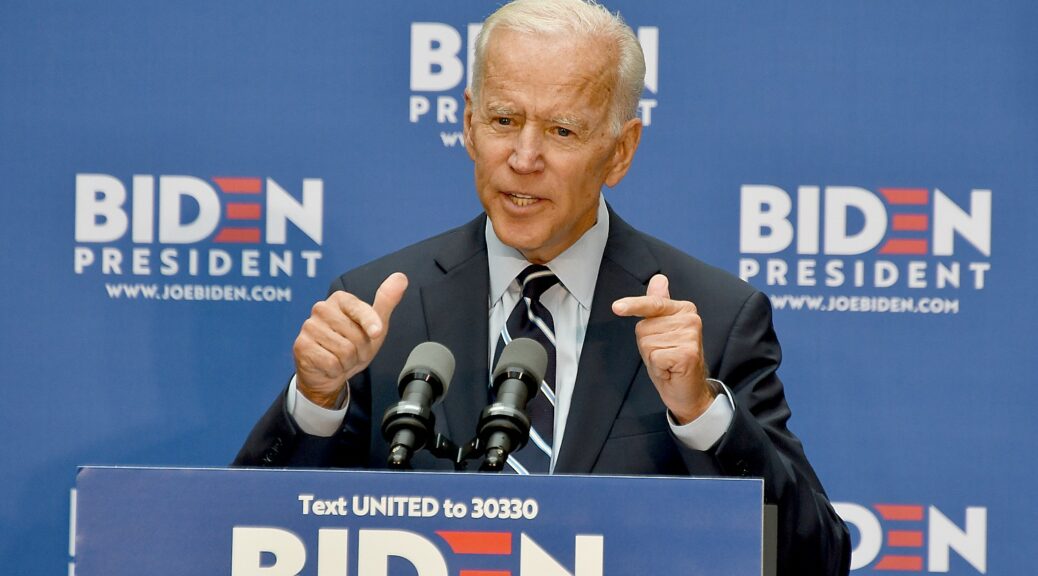
The vigorous contest of Democrats seeking the 2020 presidential nomination has produced excellent policy proposals to address major issues. Vice President Joe Biden has released his plan for ending the opioid crisis and ensuring access to effective treatment and recovery for substance use disorders. This is from the Biden Campaign:
Millions of families are impacted by the opioid crisis. It’s ravaging communities coast to coast, from New Hampshire to California. The challenge of substance use disorders is not limited to opioids. Millions of individuals are affected by misuse of other substances such as alcohol or methamphetamine. Latest estimates indicate that, in 2018, almost 68,000 Americans died from a drug overdose – almost 47,000 of which involved an opioid. And, the impacts of this crisis reverberate in our classrooms and neighborhoods, in small towns and big cities.
Biden will tackle this crisis by making sure people have access to high quality health care – including substance use disorder treatment and mental health services. That’s what Obamacare did by designating substance use disorder treatment and mental health services as essential benefits that insurers must cover, and by expanding Medicaid, the nation’s largest payer for mental health services which also plays an increasingly growing role as a payer for substance use disorder services.
But President Trump wants to repeal Obamacare, including its Medicaid expansion. Repeal would be disastrous for communities and families combating the opioid crisis. It is not realistic to think that grant money will fill the hole that eliminating Obamacare and its Medicaid expansion would create.
Step one of Biden’s plan to tackle the opioid epidemic and substance use disorders is to defeat Trump and then protect and build on Obamacare. And, Biden will pursue a comprehensive, public health approach to deal with opioid and other substance use disorders. His plan will:
Hold accountable big pharmaceutical companies, executives, and others responsible for their role in triggering the opioid crisis.
Make effective prevention, treatment, and recovery services available to all, including through a $125 billion federal investment.
Stop overprescribing while improving access to effective and needed pain management.
Reform the criminal justice system so that no one is incarcerated for drug use alone.
Stem the flow of illicit drugs, like fentanyl and heroin, into the United States – especially from China and Mexico.
HOLD ACCOUNTABLE BIG PHARMA COMPANIES, EXECUTIVES, AND OTHERS
RESPONSIBLE FOR THEIR ROLE IN TRIGGERING THE OPIOID CRISIS
Biden will demand accountability from pharmaceutical companies and others
responsible for the opioid crisis, including manufacturers, distributors, and
“pill mill operators.” Pharmaceutical executives should be held personally
responsible, including criminally liable where appropriate. Specifically, Biden
will:
Direct the U.S. Justice Department to make actions that spurred this crisis a top investigative and, where appropriate, civil and criminal enforcement priority. Biden will make sure the Department has all the necessary resources to complete this work. Building on the efforts of the Obama-Biden Administration, Biden will also ensure the Food and Drug Administration takes action when new information reveals harms from previously approved drugs (including the risk of diversion, or the use of drugs by an individual other than the one to whom the drug was prescribed), ensures compliance with risk mitigation strategies, and punishes drug companies for deceptive practices. And, he will appoint an Opioid Crisis Accountability Coordinator to coordinate efforts across federal agencies and support the enforcement efforts of state and local partners.
Direct the Drug Enforcement Administration (DEA) to step up its efforts to identify suspicious shipments and protect communities. Opioids distributors knowingly shipped millions of pills to towns with hundreds of residents, helping trigger the opioid epidemic. Biden will empower the DEA to stop drug shipments from pharmaceutical companies and their distributors that create risks of diversion and misuse. Biden will work with Congress to allow the DEA to act expeditiously when a pharmaceutical distributor fails to adequately monitor shipments that could pose an “imminent danger” to vulnerable communities and increase penalties for companies that fail to take action to stop suspicious shipments. In addition, Biden will direct the DEA to improve data collection on wholesalers and pharmacies, including prescribing patterns and suspicious order reports, and to disseminate its analysis to distributors to prevent problems before they become disasters.
Ban drug manufacturers from providing payments or incentives to physicians and other prescribers. Pharmaceutical companies work hard to persuade doctors and other medical personnel to prescribe their products. These companies essentially pay providers to prescribe opioids and other drugs by, for example, paying providers to speak at or attend conferences, or consult for their companies. By banning these practices, Biden will ensure that patients’ lives do not take a backseat to doctors’ bottom lines.
Terminating pharmaceutical corporations’ tax break for advertisement spending. Drug corporations spent an estimated $6 billion in 2016 alone on prescription drug advertisements to increase their sales, a more than four-fold increase from just $1.3 billion in 1997. The American Medical Association has even expressed “concerns among physicians about the negative impact of commercially driven promotions, and the role that marketing costs play in fueling escalating drug prices.” Currently, drug corporations may count spending on these ads as a deduction to reduce the amount of taxes they owe. But taxpayers should not have to foot the bill for these ads. As President, Biden will end this tax deduction for all prescription drug ads, as proposed by Senator Jeanne Shaheen.
MAKE EFFECTIVE PREVENTION, TREATMENT, AND RECOVERY SERVICES AVAILABLE TO
ALL WHO NEED THEM
Biden has long recognized and led on
efforts to make clear that substance use disorders are diseases, not a
lifestyle choice, and that we need to change how we talk about and treat
substance use disorders to align with this fact.
He knows that the most important step we can take to address substance use
disorders is to ensure that Americans have access to affordable, high-quality
health care, including treatment for mental illnesses and substance use
disorder. That’s why Biden has a plan to
build on the Affordable Care Act and achieve universal coverage. In addition,
Biden will redouble efforts to ensure insurance companies stop discriminating
against people with behavioral health conditions and instead provide the
coverage for treatment of mental illness and substance use disorders that
patients and families need. Congress passed a bipartisan parity law 12 years ago requiring
that this discrimination stop, but the enforcement of parity has been
insufficient. As Vice President, Biden championed efforts
to implement the Paul Wellstone and Pete Domenici
Mental Health Parity and Addiction Equity Act. As President, he will finish the
job by appointing officials who will hold insurers accountable, enforcing our
parity laws to the fullest extent. He will also direct federal agencies to
issue guidance making clear how state officials and the public can file a
complaint when their insurers – or Medicaid – are not
living up to their parity obligations.
In addition, Biden will work to make sure that people experiencing substance
use disorders have access to quality facilities and providers. As President, he
will ensure that the new public option, Medicare, Medicaid, the Indian Health
Service, the Military Health System, and the Veterans Health Administration
accelerate integration of substance use disorder care into standard health care
practice. Biden will double funding for community health centers and expand the
supply of health care providers, for example by growing the National Health Service Corps. And, he
will protect rural hospitals from
payment cuts, give them the flexibility they need to remain open, and invest in
telehealth so people in remote areas can still have access to mental health and
substance use disorder specialists.
Finally, Biden will make sure federal funds are specifically targeted at
improving access to treatment and recovery for opioid and other substance use
disorders, and at preventing these disorders in the first place. As Vice
President, Biden championed passage of the 21st Century Cures Act, which
included $1 billion in funding for states to address the opioid epidemic. That
was a down payment. To deal with the immense scope of the opioid and substance
use disorder crisis, Biden will dramatically scale up the resources available,
with an unprecedented investment of $125 billion over ten years. Funds will be
used to:
Pursue comprehensive strategies to expand access to treatment, particularly in rural and urban communities with high rates of substance use disorders and a lack of access to substance use disorder treatment services. Biden will invest $75 billion in flexible grants to states and localities for prevention, treatment, and recovery efforts. State and local agencies will also be able to use funds to enhance data systems allowing them to better target resources to individuals and communities most in need of support. As a condition for receiving funding, grant recipients will have to provide long-term, comprehensive strategic plans that address the multifaceted nature of the substance use disorder crisis. Funds may be used to:
Invest in evidence-based, cost-effective prevention programs in schools and communities to reduce the development of substance use disorders.
Mitigate harms from opioid and other drug use, including overdoses. Local communities will be able to use the funds to implement evidence-based programs designed to stop the spread of diseases like hepatitis C and HIV, including syringe service programs, or to scale up innovative programs like the safe station initiative started in Manchester, New Hampshire, which allows those seeking help to go to fire stations in order to be connected to treatment and recovery services.
Expand access to ongoing treatment and recovery services. Communities will be able to use funds to increase access to substance use disorder and mental health treatment and other services to support long-term recovery, including peer support networks and recovery coaches, and better integrate primary care and behavioral health. Recognizing the strong evidence that social supports, including family support, may have a positive impact on the treatment of HIV, Biden will support the development of family-centered models for substance use disorder treatment and recovery.
Make Medication Assisted Treatment (MAT) available to all who need it, reaching universal access no later than 2025. MAT (also referred to as MOUD or Medications for Opioid Use Disorder) is regarded as the gold standard of care for individuals with opioid use disorder. Yet, less than 50% of substance use disorder facilities around the country offer even one of the FDA-approved medications. The 21st Century Cures Act, legislation Biden championed as Vice President, provided resources to states designed to expand access to MAT. Biden will build on this in order to ensure universal access to MAT for all who need it, including by:
Providing $20 billion for grants to dramatically expand capacity to administer MAT across the country, especially in underserved areas, including establishing new facilities and developing training programs to increase the number of professionals able to administer MAT.
Stopping insurance companies from erecting barriers to coverage of MAT. For example, insurers have imposed “fail first” protocols which require prescribers to certify that other therapies were tried before covering MAT. Insurers also may require that physicians obtain “prior authorization” for MAT before prescribing it.
Removing undue restrictions on prescribing medications for substance use disorder. For example, drugs containing buprenorphine were approved by the FDA in 2002 but a relatively small number of doctors or medical personnel are certified to prescribe them. Biden will ensure that any undue restrictions on prescribing are lifted and review methadone treatment regulations.
Help first responders and community health providers respond to overdoses. Biden will invest $10 billion to provide local communities with the tools needed to prevent overdoses and respond to emergencies emanating from this crisis.
Ensure local communities have a sufficient supply of overdose prevention drugs. Naloxone (also known as Narcan) is a medication that can reverse an opioid overdose, making it a critical tool in the fight to save lives. Biden will expand grants to states for the purchase of Naloxone to be distributed to local community actors called upon to respond to overdoses, including first responders, public health providers, and the staff at homeless shelters and public libraries.
Demand that drug companies charge a fair price for overdose drugs, including Naloxone. The Biden Administration will aggressively negotiate a reduction in the drug’s price, on behalf of the federal government, and state and local communities.
Support first responders. Police officers and firefighters are often the first on the scene of an overdose. Biden will ensure they are equipped not just with naloxone, but also with the mental health and resilience support anyone would need after being exposed again and again to such trauma.
Invest in community-based prevention programs and a major public education effort to eliminate the stigma surrounding substance use disorder treatment. Biden will invest $5 billion in community-based prevention efforts and public education initiatives including training educators to recognize the signs of mental health problems and substance use disorders and refer them to appropriate services. Funds will also support evidence-based education programs for young people on mental health and substance use disorders.
Expand the pipeline of medical personnel to treat substance use disorders. Building on legislation like the Opioid Workforce Act of 2019, Biden will work with Congress to invest $5 billion to expand medical residencies and access to education and training for medical personnel in substance use disorder diagnosis and treatment. Funding will support training for primary care providers, as well as other members of the health care team, to build an integrated system of care.
Invest in research by doubling funding for the NIH HEAL (Helping to End Addiction Long-Term) Initiative. This $10 billion investment will support efforts to improve treatments for chronic pain.
Provide targeted interventions for particular populations. Biden will invest $10 billion in efforts specifically designed to support populations with unique situations or needs. Biden will ensure a portion of this funding for state and local governments is set aside for Tribal governments. In addition to expanding veterans’ access to substance use disorder and mental health treatment, Biden will direct his Secretary of Veterans Affairs to ensure VA medical personnel are sufficiently trained in safe prescribing practices and pain treatment. Biden will call upon the public health and criminal justice systems to provide evidence-based substance use disorder treatment, including MAT, for people during their incarceration and after their release. Finally, Biden will expand investments to help children suffering from Neonatal Abstinence Syndrome or Neonatal Opioid Withdrawal Syndrome, and to ensure their mothers have access to effective treatment and care.
STOP OVERPRESCRIBING WHILE IMPROVING ACCESS TO EFFECTIVE AND NEEDED
PAIN MANAGEMENT
An essential part of our national strategy to address the opioid epidemic must
be stopping pharmaceutical companies’ practices that lead to overprescribing.
Yet at the same time, physicians still must effectively treat pain. Chronic
pain is a growing public health challenge with wide-ranging impacts: keeping
individuals out of the workforce, negatively affecting their mental and physical
health, contributing to suicidal ideation, and otherwise limiting their quality
of life. Biden believes we need to pursue two joint goals: eliminate
overprescribing of prescription opioids for pain, and improve the effectiveness
of and access to alternative treatment for pain. Biden will:
Support development of less addictive pain medications and alternative pain treatments, and improve standards of quality for treatment. We need pain medications that are less addictive and more effective. Biden will invest in NIH research to develop these new medications. By doubling funding for NIH’s HEAL program, Biden will accelerate research regarding alternative treatments and therapies and help providers and patients better understand the options and access alternatives. And, he will direct the FDA to give priority to new pain medications with a documented reduced risk of addiction.
Expand coverage for alternative pain treatments. As documented in a recent study related to back pain, some non-pharmacological pain interventions (e.g., psychological counseling, acupuncture, physical therapy, or occupational therapy) are not consistently covered or have administrative barriers to coverage (e.g., pre-authorization, visit limits). In accordance with evidence-based medicine, Biden will call for a requirement that Medicare, Medicaid, his proposed new public option, and private insurance companies consistently and transparently cover alternatives to opioids for chronic pain, without barriers such as prior authorization or high levels of cost-sharing.
Crack down on misleading advertising regarding substance use disorder treatment facilities with no basis in evidence. Biden will ensure that the Federal Trade Commission and the FDA act when companies try to mislead. He will appoint leaders of both agencies who will make this a key priority.
Provide training to medical personnel in pain management and substance use disorder treatment. Building on the Obama-Biden Administration’s prior efforts, Biden will direct the U.S. Department of Health and Human Services to work with the medical community to support research and the development of curricula and training regarding pain management. He will ensure that the systematic study of pain management and substance use disorder is a mandatory part of the curricula and material on which doctors and other medical personnel are tested. Those seeking a federal DEA license to prescribe controlled substances will be required to receive training on proper prescribing guidelines and pain management.
Expand the effectiveness of monitoring programs designed to prevent inappropriate overprescribing of opioids. Prescription Drug Monitoring Programs (PDMPs) are electronic databases designed to prevent drug abuse. For example, a provider can check the database before prescribing in order to determine whether his or her patient has been getting the same prescription from multiple providers. In order to receive any of the $125 billion in new grants under the Biden Administration, states will have to institute a requirement that every prescriber checks the database every time they write a new opioid prescription. Biden will also set aside some of these grant dollars to ensure states improve Prescription Drug Monitoring Programs data-sharing across state lines.
Ensure regular updating of the Centers for Disease the Control and Prevention (CDC) prescriber guideline based on the best available evidence. The CDC has issued a guideline to help prescribers make evidence-based decisions regarding when and how to prescribe opioids in order to minimize the risk of abuse while also effectively treating pain. Biden will ask the CDC to commit to regularly updating these guidelines as new evidence emerges regarding opioid abuse risk factors and alternative pain treatments. And, he will partner with health care providers and states to maximize providers’ awareness and use of the guideline.
REFORM THE CRIMINAL JUSTICE SYSTEM SO THAT NO ONE IS INCARCERATED FOR
DRUG USE ALONE
Biden has released a criminal justice plan
that will strengthen America’s commitment to justice and reform our criminal
justice system by building a system focused on redemption and rehabilitation.
Biden believes that no one should be incarcerated for drug use alone, and as
President he will treat drug use as a disease rather than a crime.
Specifically, Biden will:
End all incarceration for drug use alone and instead divert individuals to drug courts and treatment. Biden will require federal courts to divert these individuals to drug courts so they receive appropriate treatment and services. He’ll incentivize states to put the same requirements in place. And, he’ll expand funding for federal, state, and local drug courts and other programs that divert individuals who commit crimes as a result of or in furtherance of substance use disorders to treatment rather than incarceration.
Get people who should be supported with social services – instead of in our prisons – connected to the help they need. Too often, those in need of mental health care or treatment for a substance use disorder do not get the care that they need. Instead, they end up having interactions with law enforcement that lead to incarceration. To change the nature of these interactions, the Biden Administration will fund initiatives to partner mental health and substance use disorder experts, social workers, and disability advocates with police departments. These service providers will respond to calls with police officers so individuals who should not be in the criminal justice system are diverted to treatment for substance use disorder or mental illness, when appropriate, or are provided with the housing or other social services they may need.
Read more about Biden’s plan to reform the criminal
justice system at https://joebiden.com/justice/.
STEM THE FLOW OF ILLICIT DRUGS LIKE FENTANYL, ESPECIALLY FROM CHINA AND
MEXICO
As part of a comprehensive agenda that prioritizes prevention, treatment,
recovery, and harm reduction, Biden believes that part of the solution to the
opioid crisis involves preventing bad actors from smuggling opioids and other
illicit drugs into our country. Specifically, Biden will:
Make fentanyl a top priority in our dealings with China. The Treasury Department has already sanctioned a small number of Chinese nationals in connection with fentanyl – it’s a good start, but going after individuals will not alter Beijing’s thinking long-term. Biden will pressure Beijing to crack down on illicit fentanyl production in China and stem the flow of the drug into the United States. Biden will also develop regional strategies in the Asia-Pacific and the Americas to deal with shifts in the routes and sources of fentanyl in response to a Chinese crackdown.
Enhance cooperation with Mexican authorities to disrupt the movement of heroin and fentanyl across the U.S.-Mexico border. Chinese fentanyl is frequently transshipped through Mexico, and then smuggled across the border in pure form or combined with heroin. As China takes steps to police fentanyl and its precursors, production and distribution will increasingly shift to Mexico. Biden will pursue strong, sustained cooperation with Mexican authorities to disrupt suppliers and supply routes, including the importation of precursor chemicals from China. The Biden Administration will also provide technical assistance to enhance the Mexican Post Service’s (SEPOMEX) ability to detect and electronically track shipments of fentanyl and precursors that come through Mexico. As President, Biden will repair the damage to U.S.-Mexico ties inflicted by Donald Trump and develop a common agenda with Mexico that looks beyond our shared border to promote our shared prosperity and protect U.S. national security interests.
Enforce sanctions on international actors engaged in the trafficking of illicit drugs like heroin and fentanyl. Biden’s Treasury Department sanctions team will map the financial institutions and networks that facilitate the distribution of fentanyl and key precursors and develop sanctions packages based on that evidence and task the Office of the Director of National Intelligence to support these efforts with a focus on illicit finance.
Increase cooperation among global law enforcement agencies. Biden will direct U.S. law enforcement agencies to work closely with foreign counterparts, share threat information, and use technology to assist in tracking and seizing illicit shipments.
Ensure federal agencies have the tools and resources they need to stop the flow of fentanyl from abroad. Fentanyl producers have exploited gaps in monitoring through the U.S. Postal Service (USPS) to flood the U.S. with the deadly product. Biden will give the USPS the tools and resources it needs to carry out that mandate and disrupt the large supplies of fentanyl that are sent through the mail system, working with U.S. Customs and Border Protection. In addition, the vast majority of opioids and fentanyl are shipped through legal ports of entry—not in between them. Rather than waste resources building a wall or tearing families apart, Biden will direct resources to the ports of entry to interdict opioid shipments there.
Combating the Opioid Epidemic and Substance Use
Disorders, Paid for By Making Sure Pharma Pays Its Fair Share
Biden’s $125 billion investment in a comprehensive response to the opioid
epidemic and substance use disorders is paid for by raising taxes on the profits
of pharmaceutical corporations.

